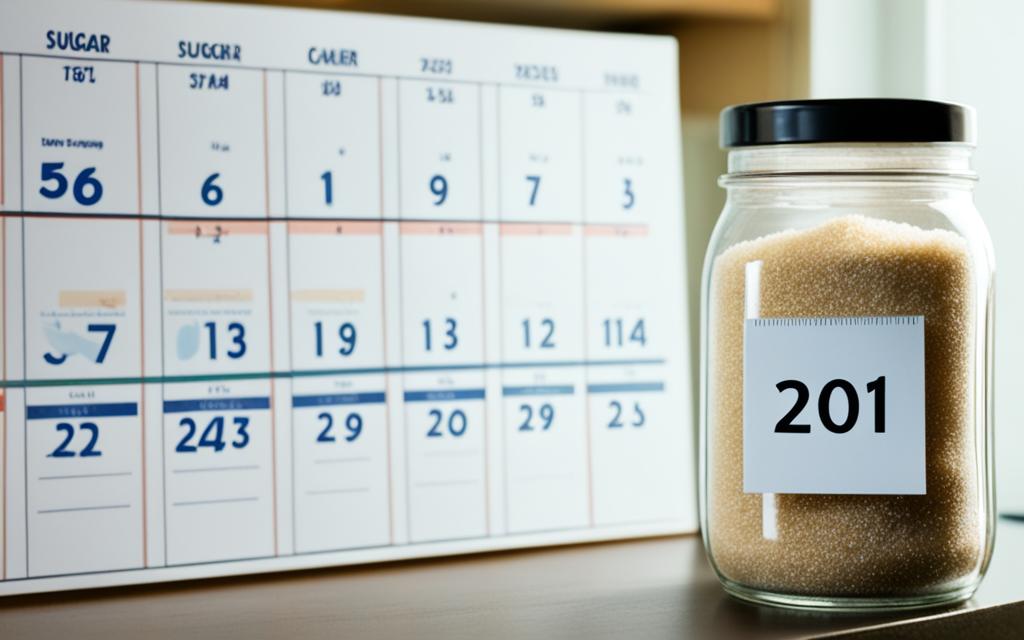Sugar is a pantry staple that many people have in their homes, but have you ever wondered if it has an expiry date? In this article, we’ll explore the shelf life of sugar and provide tips on how to properly store it to extend its freshness. Whether you’re dealing with granulated, powdered, or brown sugar, understanding the expiration and storage of this common ingredient can help you make the most of your sugar supply.
The Basics of Sugar Shelf Life
When it comes to the shelf life of sugar, it’s important to understand that this common pantry ingredient has an incredibly long lifespan compared to many other foods. This is due to the fact that sugar is a natural preservative, which means it inhibits the growth of bacteria, mold, and other microorganisms that can cause food to spoil.
In fact, sugar can last for years when stored properly, making it one of the most shelf-stable ingredients you can have in your kitchen. Whether you have granulated, powdered, or brown sugar, the basic principles of sugar storage are the same – keep it in an airtight container in a cool, dry place, and it will maintain its quality and freshness for a very long time.
So, how long does sugar last? The answer largely depends on the type of sugar and how it’s stored, but in general, you can expect sugar to have a remarkably long shelf life compared to many other common kitchen staples. With proper storage, sugar can remain fresh and usable for years, if not decades.
Of course, it’s important to note that while sugar doesn’t technically have an expiration date, it can still go stale or develop an off-flavor over time. But with the right storage techniques, you can ensure that your sugar supply remains fresh and ready to use for all your baking and cooking needs.
Does Sugar Have an Expiry Date?
While sugar doesn’t technically have an expiration date, it’s important to note that it can still go stale or develop an off-flavor over time. The good news is that sugar is one of the most shelf-stable foods you can have in your pantry. In fact, sugar can last for years when stored properly, making it a reliable staple to have on hand.
The key to ensuring your sugar stays fresh for as long as possible is proper storage. Sugar is a natural preservative, which means it inhibits the growth of bacteria, mold, and other microorganisms that can cause food to spoil. However, exposure to air, moisture, or heat can cause sugar to lose its fresh flavor and quality over time.
So, while sugar doesn’t have a defined expiry date, it’s important to keep an eye on its condition and use it within a reasonable timeframe. By understanding how long sugar lasts and following best practices for storage, you can ensure that you always have a reliable supply of this versatile ingredient on hand.
How to Store Sugar Properly
Proper storage of sugar is key to maintaining its freshness and extending its shelf life. Here are some tips to help you store sugar properly:
- Keep sugar in an airtight container. This will prevent air and moisture from getting in and causing the sugar to clump or harden.
- Store the container in a cool, dry place, such as a pantry or cupboard. Avoid storing sugar near heat sources or in humid environments.
- For granulated sugar, you can store it in its original packaging or transfer it to a clean, dry container.
- For powdered or confectioners’ sugar, be sure to store it in an airtight container to prevent it from absorbing moisture and becoming lumpy.
- When it comes to brown sugar, store it in an airtight container or resealable bag to keep it soft and moist.
By following these tips for storing sugar properly, you can maximize the shelf life of your sugar and ensure it remains fresh and ready to use whenever you need it.
Signs That Sugar Has Gone Bad
While sugar has a long shelf life, it’s still possible for it to go bad over time. Here are some signs that your sugar may have spoiled:
- Clumping or Hardening: If your sugar starts to form large clumps or becomes hard and difficult to pour, it’s a clear indication that it has expired or gone bad.
- Discoloration: Look for any changes in the color of your sugar. If it appears yellowed, brownish, or has developed dark spots, it’s time to discard it.
- Unusual Odor: Spoiled sugar may develop a musty, sour, or unpleasant smell, which is a telltale sign that it has gone bad.
- Presence of Insects or Pests: If you notice any signs of insects, mold, or other pests in your sugar container, it’s a clear indication that the sugar has expired and is no longer safe to use.
If you notice any of these signs that sugar has gone bad, it’s best to discard the affected sugar and replace it with a fresh batch to ensure the quality and safety of your food preparations.
Conclusion
In conclusion, sugar is a remarkably shelf-stable ingredient that can last for years when stored properly. While sugar doesn’t have a true expiration date, it can still go stale or develop off-flavors over time. To keep your sugar fresh for as long as possible, be sure to store it in an airtight container in a cool, dry place.
By understanding the summary of sugar shelf life, you can ensure that you always have a reliable supply of this essential pantry staple on hand. Whether you’re dealing with granulated, powdered, or brown sugar, following the proper storage guidelines can help extend the life of your sugar and prevent it from going bad.
Remember, does sugar expire is not a simple yes or no answer. With the right how to store sugar techniques, you can maximize the freshness and longevity of your sugar for all your baking and cooking needs. By keeping these tips in mind, you’ll be able to make the most of your sugar supply and avoid any unexpected spoilage.










